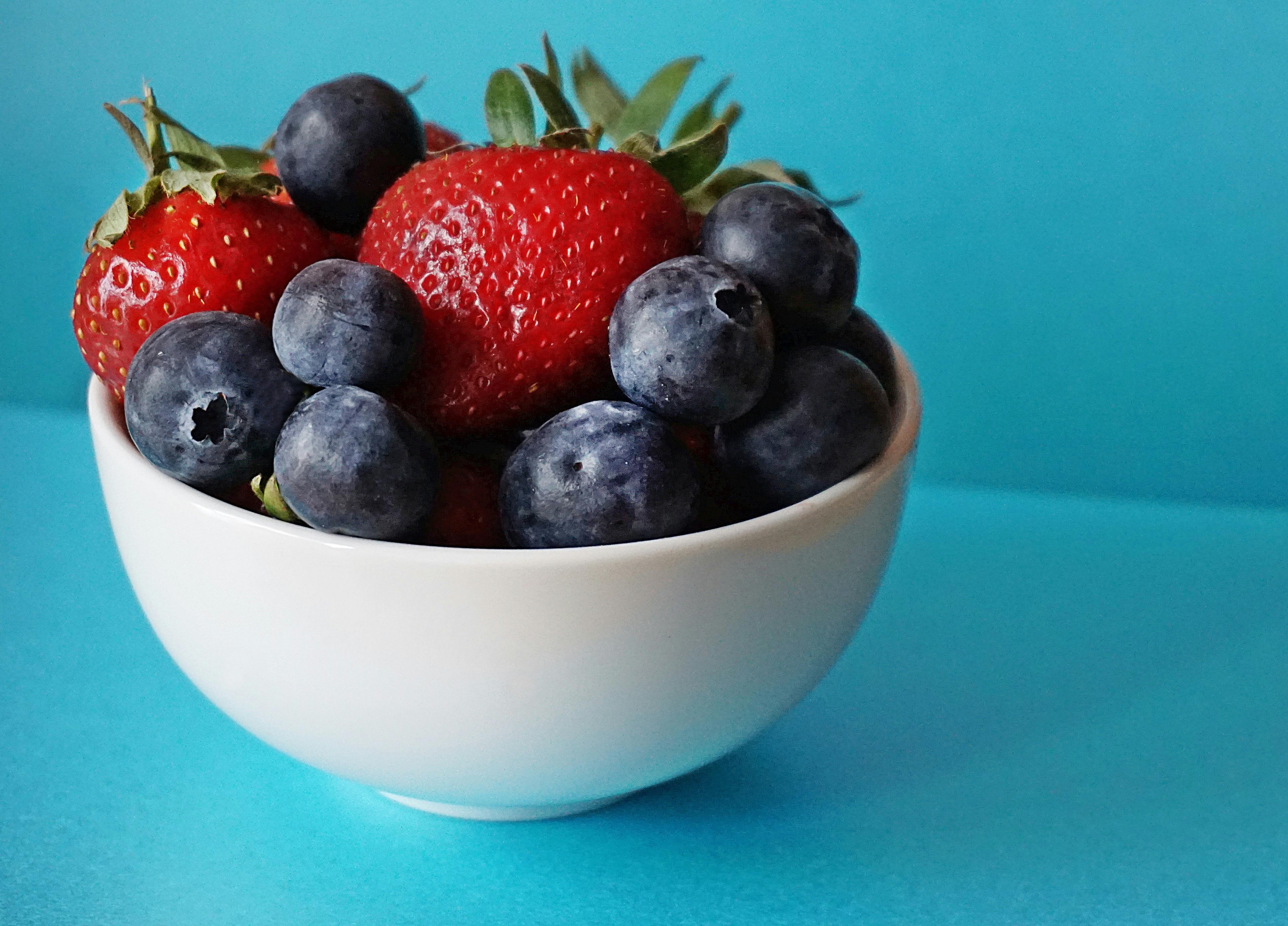If you have recently noticed that your blueberries are shriveling up, you may be wondering what is causing this. There could be a number of potential factors behind this, from environmental conditions to pests or diseases. In this article, we will explore the possible causes of blueberry shriveling and provide tips on how to prevent it.Blueberries can start to shrivel up when they become overly dry or are exposed to temperatures that are too hot. If blueberries have been stored for too long, or weren’t picked at the proper ripeness, they can also begin to dry out and shrivel up. Additionally, if the blueberry plants have been infected by a fungal disease, this can cause the berries to shrivel prematurely.
Symptoms of Shriveled Blueberries
Shriveled blueberries are a common issue among home gardeners and commercial growers alike. The cause of these symptoms can vary, but the most common cause is water stress, or lack of water. Other potential causes include disease, pests, or nutrient deficiencies. Regardless of the cause, the symptoms are usually the same.
The first symptom is a noticeable decrease in size of the berry. The blueberry will become wrinkled or shriveled as it loses its plumpness and size. The color of the berry will also change from vibrant blue to dull grey-blue or even brown in some cases.
The second symptom is that the berry will become very hard and dry. This is due to the loss of water in the fruit, causing it to become dehydrated and harden up. These berries may still be edible but won’t be as juicy and flavorful as they should be.
The third symptom is that many times the affected berries will drop off prematurely from the plant before they are ripe enough for harvest. This can be a huge setback for gardeners, as it reduces their yield significantly and affects their overall yield quality.
Fortunately, if you catch it early enough there are steps you can take to help prevent any further damage to your blueberries or even reverse some of the damage already done. Proper irrigation techniques such as mulching around plants to help retain moisture in soil and watering regularly with a drip irrigation system can go a long way towards preventing any further issues with shriveled blueberries. Additionally, removing any diseased or infested plants right away can help stop diseases or pests from spreading to other plants in your garden.
Overall, shriveled blueberries are an issue that many gardeners face at one time or another but with proper care and attention you can avoid this issue altogether or at least reduce its impact on your crop yield quality.
Can I Salvage My Shriveled Blueberries?
If you’ve got a batch of shriveled blueberries, don’t toss them out just yet! There’s still hope for those wrinkly little fruits. With a few simple steps, you can quickly revive your shriveled blueberries and enjoy them in all their juicy glory.
To start, take the blueberries out of their container and place them in a bowl or colander. Gently rinse the berries with cold water and use your fingers to remove any leaves or stems that may be attached. Shake off the excess water and spread the berries out on a paper towel to dry.
Once the blueberries are dry, grab a shallow dish large enough to hold all of the fruit in a single layer. Fill the dish with fresh cold water and add 1 teaspoon of sugar for every 2 cups of water. Place the blueberries into the sugar water and let them soak for 15-30 minutes. The sugar helps draw moisture back into the berries, making them plump up again.
After soaking, drain off any excess liquid from the blueberries and spread them out on paper towels once more to air dry before using or storing them. You can also roll them in a paper towel to help absorb any remaining moisture. This will help ensure that your revived blueberries stay juicy until you’re ready to use them!
With these simple steps, you can easily salvage shriveled blueberries so they’re ready for smoothies, oatmeals, salads, or any other recipe you have in mind!
Too Much Water Can Cause Blueberries to Shrivel
Blueberries are a delicate fruit that require the right amount of water for optimal growth and ripening. When too much water is given, the blueberry’s delicate skin can become over-saturated, causing it to become soft and shriveled. This can happen when a blueberry is over-watered or is exposed to too much moisture in the air.
The most common cause of over-watering is when someone waters too frequently or with too much water at once. If the soil around the blueberry bush is allowed to dry out for a few days between watering, then it should be safe from getting over-saturated with water. It is important not to let the soil get too dry either, as this can cause other problems with the growth of the plant.
Another reason why blueberries may shrink is because of high humidity levels in the air. If there’s too much moisture in the air, it can penetrate into the skin of a blueberry and cause it to become soft and shriveled. To prevent this from happening, make sure you keep your garden area well ventilated and not overly humid.
Finally, if you live in an area with frequent rain or snowfall, make sure you’re providing adequate drainage for your blueberry bushes so they don’t become saturated with water. If you notice any signs of wilting or shriveling on your plants, try cutting back on watering them until they return to normal size and shape.
Not Enough Water Can Cause Blueberries to Shrivel
When blueberries lack adequate water, they are unable to fulfill their metabolic processes. This can cause the berries to become dry, hard and shriveled. The lack of water causes the berries to become dehydrated, which can significantly reduce their size and weight. This is because as the berry shrinks, its skin becomes tight and brittle. As a result, the berry will be more susceptible to damage from pests and other environmental factors.
The lack of water also affects the blueberry’s flavor and texture. When a blueberry is not getting enough water, it will not have the same sweetness or juiciness that it would otherwise have if it was well hydrated. Additionally, when a berry is lacking in water, its cell walls become weakened which causes it to be more susceptible to breaking when picked or handled.
Furthermore, when blueberries do not receive enough water they are unable to grow properly and develop their distinct color. Without adequate moisture in the soil, the berries will not have access to the nutrients needed for them to develop their deep purple hue. As a result, they will appear duller than usual and may even have white spots on them due to insufficient nutrients in their system.
It is important for gardeners and farmers alike to ensure that their blueberries are getting enough water in order for them to remain healthy throughout their growing season. Without proper hydration, these delicious fruits could be compromised in terms of both quality and quantity.

How to Prevent Blueberry Shriveling
Blueberries are a delicious and versatile fruit that can be used in pies, muffins, smoothies, and more. Unfortunately, these tasty berries can start to shrivel if they are not stored properly. Fortunately, there are some simple steps you can take to keep your blueberries fresh and prevent them from shriveling.
The first step is to purchase fresh blueberries. Look for blueberries that are plump and firm. Avoid berries that have soft spots or discoloration. When you get your blueberries home, store them in the refrigerator as soon as possible.
Once you have stored your blueberries in the refrigerator, make sure to check on them regularly. The key is to use the berries before they begin to shrivel. If you notice that some of the berries have begun to shrivel, use them right away or freeze them for future use.
It’s also important to keep your blueberries dry when storing them in the refrigerator. Moisture can cause the berries to spoil more quickly. To prevent this from happening, place a paper towel on top of the container before sealing it shut with a lid or plastic wrap. This will absorb any excess moisture and help keep your blueberries fresh for longer.
Finally, be sure not to wash your blueberries until just before you plan on using them. Washing them too early will remove their natural protective coating which can cause them to spoil faster. So only wash your berries when you’re ready to use them!
Following these simple steps will help ensure that your blueberries stay fresh and do not shrivel up prematurely!
What is the Ideal Soil Moisture Level for Blueberries?
Blueberries are a great addition to any garden and can be grown in a variety of soils and climates. However, blueberries do have a specific soil moisture level requirement that needs to be maintained in order for them to thrive. The ideal soil moisture level for blueberry plants is between 60-65%. This range provides enough moisture for the plants without causing root rot or other problems associated with overly wet soils.
In order to maintain optimal soil moisture levels, regular watering is essential. Blueberry plants should be watered deeply and evenly throughout their growing season, which is typically from late spring through early fall. During hot, dry weather it may be necessary to water more often, while during cooler weather less frequent watering may be required. It is important to check the soil moisture level regularly, as over-watering can lead to root damage and other problems.
A good way to monitor soil moisture levels is by using a soil probe or meter. These tools measure the amount of water in the soil and give an accurate indication of when it is time to water your blueberry plants. Additionally, mulching around the base of the plants can help keep soils moist by preventing evaporation from occurring too quickly.
By maintaining optimal soil moisture levels for your blueberry plants you can ensure they remain healthy and productive throughout their growing season. With careful monitoring and regular watering you can ensure that your blueberry plants receive all the moisture they need while avoiding any damage caused by overwatering or drought conditions.
Testing Soil Moisture for Blueberry Plants
Testing the soil moisture of blueberry plants is an important part of their care. Without the right amount of water, the plant may not thrive and may even die. To ensure that your blueberry plants have the right amount of moisture, it is important to test their soil regularly. This can be done simply and quickly with a few simple tools and steps.
The first step in testing soil moisture for blueberry plants is to gather your supplies. You will need a trowel or shovel to dig into the soil, a ruler or measuring tape to measure the depth of the hole you dig, and a moisture meter or other device for measuring soil moisture content. Once you have gathered your supplies, you can move on to actually testing the soil.
Using your trowel or shovel, dig a hole roughly six inches deep near the base of your blueberry plant. Make sure not to disturb any roots while digging. Once you have dug your hole, use your ruler or measuring tape to measure its depth and make sure it is six inches deep. Then insert your moisture meter into the bottom of the hole and take a reading from it. This will tell you how much water is in the soil at that specific location.
Now that you have taken a reading from your moisture meter, compare it to what is considered an ideal level of water for blueberry plants. Generally speaking, this level should be between 70-80% relative humidity (RH). If your reading falls below this range, then it means that your blueberry plant needs more water. If it falls above this range then it means that there is too much water in the soil and you should allow some time for drainage before adding additional water.
Testing soil moisture for blueberry plants is an important part of their care as it helps ensure they have enough but not too much water to thrive and produce delicious fruit year after year! By regularly checking their soil with a moisture meter and adjusting watering accordingly, you can ensure that your blueberries remain healthy and happy!

Conclusion
Blueberries are a delicious and nutritious fruit that is capable of growing in many different climates. Unfortunately, there are several reasons why blueberries may be shriveling up, including inadequate watering, excessive sunlight, and pests or diseases. It is important to identify the cause in order to take the necessary steps to remedy the situation. Fortunately, with proper care and attention, it is possible to keep blueberries healthy and thriving.
Ultimately, there are a variety of factors that can cause blueberries to shrivel up and fail to produce fruit. By understanding the potential causes and taking steps to ensure optimal growing conditions, you can ensure that your blueberry plants remain healthy and productive for years to come.



